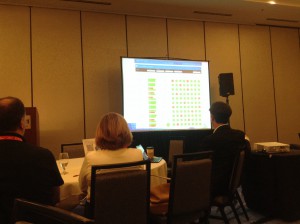Regulations, process, and records keeping are all important parts of managing health IT; however, when implemented without a strategy focused on patient and business value, they can create headaches for CIOs, not to mention patients and healthcare providers. This was an emerging theme Institute for Health Technology Transformation Conference held in Seattle at the end of August.
Regulations, process, and records keeping are all important parts of managing health IT; however, when implemented without a strategy focused on patient and business value, they can create headaches for CIOs, not to mention patients and healthcare providers. This was an emerging theme Institute for Health Technology Transformation Conference held in Seattle at the end of August.

Ross also asked his peers to consider the move to electronic records keeping to be a move to digitizing the healthcare industry to keep pace with the innovation available in other industries instead of a regulatory requirement. He envisions a system where a unified data platform provides digital care and knowledge management and recording keeping is a by-product of that system.
Focusing on the right strategy was also a theme in a talk by Dr. Nick Wolter of the Billings Clinic. Wolter described a 1993 merger with Deaconess that nearly bankrupted the organization. The merger was focused on regulatory and process integration while ignoring the vision for the new organization. In 1997, with financial losses posted, they hired turnaround experts who focused on physician leadership development. By 2005 they had established a vision to be best in the nation for patient safety, quality, and service. In 2010 Billings Clinic added value to their mandate and are looking closely at ACO metrics to make sure they are delivering on these promises.
Throughout the two-day conference, panelists called out EMRs as a significant driver of physician dissatisfaction. While meaningful use requirements have increased the focus on moving to electronic records, in many cases this is apparently happening without a vision that leverages these transformations to improve physician efficacy and patient care, which is unfortunate as these two areas if provided with appropriate electronic tools could see some of the biggest benefits.
Although there is was definitely a dissatisfaction expressed with the current state of health IT, it was promising to see shifts towards tools that are more focused on provider workflow and patient engagement. Even more promising was the general understanding at this conference that digital healthcare can and should be better delivered. At Wellpepper we’re excited to support this shift to a patient- and value-centered system.